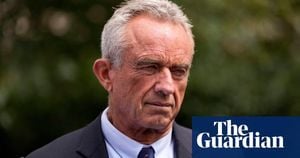China's economic influence is more palpable than ever, particularly as it navigates complex international waters marked by rising nationalism and global tensions. Recently, the focus has been on the challenges faced by Chinese enterprises operating abroad, as highlighted by the predicament of China's Century Steel Mill.
The steel mill, based in the Rashakai Economic Zone of Pakistan, has issued stark warnings about its potential shutdown. This facility is not just another industrial operation; it's part of the significant framework established by the China-Pakistan Economic Corridor (CPEC), which aims to bolster economic ties between the two nations. According to reports, Century Steel conveyed its grievances directly to Pakistan's Prime Minister, Shehbaz Sharif, pinpointing high land costs and competition from regional steel mills as major threats to its operations.
"This is our final communication. If the situation doesn't improve, we will begin dismantling the plant," the company lamented. They've faced operational hurdles, including frequent power outages and bureaucratic delays, which have severely impacted their productivity. The CPEC initiative, once seen as a cornerstone of China's Belt and Road Initiative, is now under scrutiny as operational viability hangs by a thread.
Meanwhile, across the Pacific, Chinese President Xi Jinping has stepped up as the global defender of free trade, particularly as former U.S. President Donald Trump’s protectionist rhetoric resurfaces. At the Asia-Pacific Economic Cooperation (APEC) summit held recently, Xi warned the global community of the dangers of fragmentation within the economy. He referred to protectionism as leading to severe challenges, noting, "Dividing an interdependent world is going back in history." His message resonates as he positions himself against the policies of Trump, who threatened tariffs on international imports, creating uncertainty for many global economies.
The juxtaposition of these narratives paints a picture of China's dual role on the global stage: grappling with its enterprises facing challenges abroad, and simultaneously projecting itself as the advocate for global trade stability. The potential fallout for countries dependent on Chinese investments, like Pakistan, could be significant if companies like Century Steel falter or withdraw.
Domestically, China's stance on economic and technological justifications also faces scrutiny, particularly from nationalistic circles. Recently, renowned scientists like physicist He Zuoxiu have found themselves under attack for their comments on China’s scientific and technological aspirations, generating heated debates about the reputation of Chinese innovations. The rising fandom culture, where nationalistic fervor often overrides scientific discourse, threatens to stifle progressive discussions on how China can advance its technological sectors.
State-affiliated media sources have cautioned against overly zealous nationalism, warning of the costs it could impose on the future of China's technological development. Reports have emerged discussing how this culture may impede discussions necessary for fresh scientific advancements, warning, "While China has made remarkable achievements... it would only impede its advance by being overconfident and turning a blind eye to problems."
China's challenges stretch beyond its borders and permeate its domestic narrative of progress. The cautionary tale surrounding scientists facing backlash for honest assessments of China's capabilities could deter future innovations, something China can ill afford as it strives to maintain its competitive edge globally.
Fast forward to the geopolitical arena, Xi and Biden's most recent summit clearly signals turbulent times are on the horizon. With Xi advocating for free trade and Biden caught up in concerns over national security and economic resilience, the path forward is anything but clear. Both leaders seem to recognize the stakes involved but have locked themselves within the frameworks of their respective nations' aspirations, presenting another layer of complexity to international relations.
Reflecting on Xi’s statements at the summit, it becomes clear he aims to counteract any potential shifts back toward isolationism, urging collective collaboration to tackle the pressing economic pressures of the moment. He asserts, "The world is facing grave challenges, and we cannot afford to be divided." Yet, as with Century Steel's dilemma and rising tensions over nationalism at home, the efficacy of this approach remains to be seen.
Despite these challenges, China's ability to engage with various economies remains significant. For developing nations like Pakistan, the realities of China's influence underpin their economic strategies, reinforcing the need to adapt and find solutions to hindered operations or diplomatic confrontations. The interconnectedness inherent within these relationships must be emphasized to navigate upcoming economic crossroads effectively.
Nonetheless, as the world observes this complex dance of socio-economic interactions, it remains uncertain how these dynamics will shape global markets, industries, and international alliances. With Xi's clear stance against division, the ball lies firmly with nations worldwide, and the next moves will be pivotal. Can they collaborate toward sustainable growth, or will the tides of competition drive them apart?



